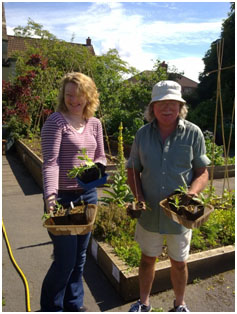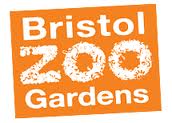Bristol Zoo Gardens
Institution Code: BRZOO
BGCI Member: Yes
Main Address:
Bristol Zoo Gardens
Clifton
Bristol
BS8 3HA United Kingdom
Telephone: 0(117) 974 7399
Fax: (0117) 973 6814
URL: www.bristolzoo.org.uk
Primary Email: emole@bristolzoo.org.uk
Bristol Community Plant Collection
Bristol Community Plant Collection is an innovative project run by Bristol Zoo Gardens (BZG) aiming to establish the first model for a dispersed national collection of hardy annual garden plants. In addition to this, through empowerment and engagement with the community, the project aims to reach out to new audiences enable participation in plant conservation and bring together a wide range of Bristol’s population to break down barriers and stereotypes. A variety of groups were recruited from primary schools in deprived areas, and a community gardening group to sheltering housing and a care home for elderly people with dementia.
The pilot of this project was initially funded by Calouste Gulbenkian Foundation and was run as part of BGCI’s Communities in Nature initiative.
Started in May 2012, the project is ongoing.
 |
For more information and to meet some of the people involved watch the Bristol Plant Collection video. |
ABOUT
A National Plant Collection is a Plant Heritage scheme where individuals or organizations document, develop and preserve a comprehensive collection of one group of plants of horticultural importance in Britain.
Bristol Zoo Gardens’ project came to address the need for more hardy annual collections. To achieve National Collection status a collection must contain 75% of known species of the plant concerned. It was decided that the Bristol Community Plant Collection would focus on growing species of Calendula, commonly called pot marigold, since they are easy to care for and attractive. BZG, with the help from BGCI, contacted various gardens around the world that hold collections of Calendula and seeds for 9 out of the 11 known species were obtained. It was hoped that the community groups would grow and propagate different species to establish the collection in their local environment and also provide plants for a collection display at BZG.
Groups were trained to germinate and care for their plants and to hand pollinate them and collect seed for next year.
 |
Upper Horfield Community Garden members growing Calendula stellata.
|
The 2012 Pilot project
The pilot began in March of 2012 with 9 community groups. 3 groups attended a training day at BZG Nursery with the others, who required it, receiving training at their own sites by the beginning of May. Equipment was delivered to the groups’ own sites where they planted and began caring for their plants. This was an exciting time for all. A teacher from Stoke Bishop Church of England Primary School reported that: ‘…the children are loving the project. Eagerly awaiting growth signs from our second batch!’
During the summer BZG visited each site to check on progress and after the growing season plants, and later seeds, were collected.
Although not a complete success, as one of the groups dropped out and another failed to establish a collection due to vandalism, plants were collected from 7 out of 9 groups and seeds were collected from 4.
In September 2012 a Bristol Community Plant Collection display was created and the project was concluded with a celebratory garden reception at BZG.
It was decided that the project would continue for another year, with the suggestion that it began earlier to allow for a longer growing season and that there should be more focus on the individual needs of each community group.
 |
Calendula arvensis (Field Marigold) growing at Chard Court Sheltered Housing.
|
The 2013 project
Due to funding issues, the project came to a halt in the beginning of 2013 but with organisational changes and new funding sources the project did go later that year and expanded to include 11 community groups.
Learning from the mistakes of the 2012 pilot project, this time two training sessions with a more central location, were offered and 6 groups were able to attend. In addition, BZG developed a more tailored approach to training and engaging with the school groups. The project officer developed and ran activities relating the plant collection which complimented the school curriculum.
Unfortunately, not everything went smoothly, some groups had problems with germination rates, poor weather affected growth and overwatering by overeager participants affected the number of plants produced for display. Even so, 7 groups produced plants for display with others focusing on producing seed after slow growth and germination rates were reported. Again, the project was concluded with a reception to celebrate the project and allow participants from other groups to meet.
 |
Robinson House Care Home collection of Calendula ‘Candyman Orange’.
|
IMPACTS
Bristol Zoo Gardens has a collection of 9 out of the 11 recognised species of Calendula and has applied to Plant Heritage for ‘Provisional’ National Plant Collection Status. This is the first dispersed National Collection and Plant Heritage has begun to revaluate their guidelines to allow for this way of growing.
The project won a silver award in the Urban Community Category of Clifton in Bloom and has featured in various publications including; ‘Country Gardener’ and will feature in the RHS magazine ‘The Garden’.
There project is a model of addressing issues of social exclusion for the community groups and achieving public participation in plant conservation i.e. contributing to species biodiversity conservation. The evaluation of the project showed that it addressed issues of political and neighborhood exclusion. In particular the individuals and their groups became more involved in their communities and exercised their citizenship skills. The project encouraged community cohesion, gave a strong focus for the groups’ activities and some of them developed their confidence and skills to improve their surroundings.
“The project brought everyone together because we are all about the gardens now and the plants which are growing. Before we would all just be in our flats; …but now we all get together for our cups of tea and coffee and we all do our little bits of our gardens and we discuss it.”- Rose, Chard Court Sheltered Housing.
The project also addressed issues of individual and group social exclusion as it increased the participants’ self esteem and feeling of contribution to society. Also, importantly, the participants appreciated having an active role in plant conservation as the following dialogue illustrates:
Sue: I knew that there are things that are going extinct. But I didn’t think much about it to be honest. You just assume that someone else is going to do something about it don’t you?
Karen: I think it is absolutely excellent to do the project in Bristol and with people in sheltered accommodations. I think it is absolutely wonderful to get people involved.
For more details on the impact of the project read the Communities in Nature Evaluation Report.
WHAT'S NEXT?
The project aims to continue with an earlier start next year to allow for a longer growing season and to allow for a whole lifecycle of plants before schools break up for summer.
The project was initially funded by the Calouste Gulbenkian Foundation and later on received financial support from Glendale Management Services. Currently new funds are being sought to ensure the sustainability of the project whilst a big recent success has been the full employment of the Community Officer by BZG.
PRACTITIONERS & SPONSORS
Edwin Mole DHE, Head of Horticulture, Bristol Zoo Gardens
Emma Moore, Gardens Supervisor, Bristol Zoo Gardens
Glendale Management Services
Calouste Gulbenkian Foundation
|
|
|
|
|
 |
|









